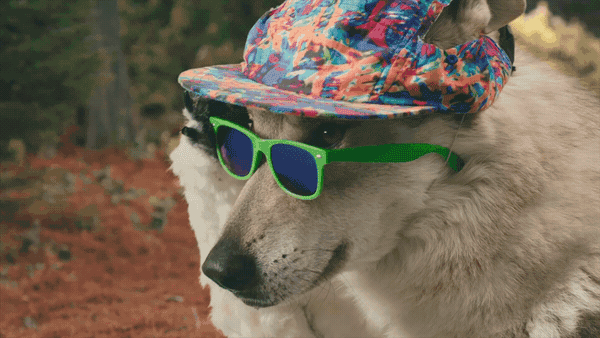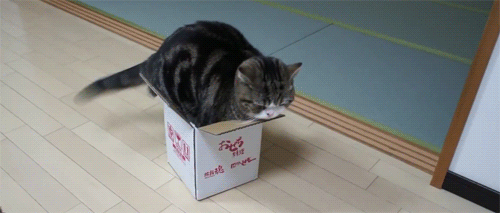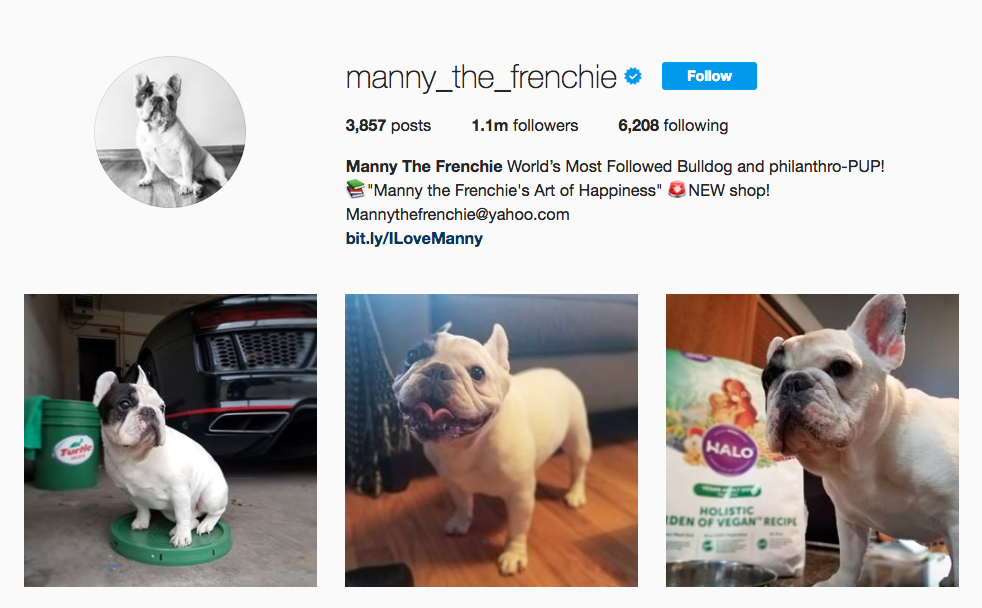Marketing Basics for Animal and Pet Influencers
April 18th, 2018 by
Pictures of animals are consistent crowd-pleasers on the internet. Unlike content that’s favored by certain demographics, kittens and puppies (or baby animals of any variety) are universally appreciated by just about all age groups and political alignments. Animals can even be educational, like our cats that explained Google Analytics. Still, with all the competition out there, effective influencer marketing requires more than a cute nose and furry belly. Learn how to make the most of your pet’s presence on social media platforms like Instagram, and how this strategy can even help bigger organizations like zoos engage with their audience.


1. Keep a Leash on Your Branding
Once you have a clever name that encapsulates the animal’s personality, decide whether you are aiming for funny, artistic, or educational content. Rather than following every trend and impulse, stick to consistent types of posts. If you have a quality camera and understand the basic rules of composition in photography, then your artistic approach might capture your pet in the best possible light. On the other hand, if your pet is constantly getting into trouble, then documenting messes and misadventures will keep followers entertained. Adapt your strategy to the starring animal’s strengths, and watch which images get the biggest reactions.
2. Use Captions, Hashtags, & Locations
Picture captions reward viewers for spending time with each image, and hashtags are a critical part of Instagram and Twitter communities. Creative hashtags add humor, and they’re an opportunity to link your pet’s profile to similar pages or topics. Link your pet to pages with the same breed and the same region. Depending on the size of your town, you can make your city or state part of your pet’s profile, including pictures of your pet at local landmarks. Don’t forget to use Instagram’s location tagging to let users know where your photos were taken. Instagram’s geo-tagging feature makes it really easy to select a nearby location based on your GPS location. And, posts with a location receive 79% more engagement than those without.


3. Find Your Animal’s Photogenic Side
If you’re serious about pet marketing, then you’ll need to post nearly every day to keep your audience engaged. Don’t forget to use the “Stories” feature for video updates and behind-the-scenes snippets, and you can even highlight stories in the bio for your pet’s account. On Instagram, your pet’s profile pic should be an endearing headshot that works well as a circular thumbnail. It should be close enough to nearly fill the available space, but it shouldn’t be so close that your pet is hard to identify. A background of a contrasting color is helpful. It also helps if your animal has a distinctive appearance, but an engaging personality is even better. Maru the cat is the Guinness world record holder as the most watched animal on YouTube, and he’s most popular for his awkwardly persistent attempts to fit into tiny boxes.
4. Make Your Furry Friend a Brand Ambassador
Zoo animals and business mascots are popular, and they make organizations more relatable. Inundated with advertisements and marketing campaigns, most customers are suspicious of salespeople. Even when a business representative is friendly and helpful, the potential customers are waiting for the sales pitch. A labrador mascot might be motivated by attention and food, but his wagging tail disarms even the most cynical viewer. The customers who meet your cat or dog at the office will appreciate being able to share their antics with friends. Rather than using your furry friend to promote your business, connect them to the values and causes that align with your mission. For a zoo, this could be spreading the word about endangered animals or sharing fun facts about the animal.


5. Choose a Unique Animal
Zoos and businesses looking for mascots have a wide range of options. A unique species, like an orangutan or llama, makes it easier to stand above the herd. If you already have a personal pet or a dog that regularly comes to the office, then there’s no need to shop for something more exotic. When it comes to animal ownership, it would be irresponsible to get an animal that you don’t have the time or resources to keep for the duration of its life. Businesses in need of a mascot might be able to sponsor an animal at the zoo or find someone in the community who already owns a unique animal. If you’re working with a dog or cat, just try to find the qualities that make your pet unique. Browse through successful pages like Mannie the Frenchie, and you’ll see what it takes to become “the world’s most followed bulldog.”
6. Avoid Overtly Promotional Posts
After they reach a certain level of popularity, the owners of influencer pets are often contacted by businesses looking to sell and promote products. Freebies might be offered in exchange for promotional posts showing or mentioning the product. Some owners will be happy accepting free swag, but their more ambitious peers will hold out for paid sponsorship deals. When profiles advertise for every company that sends free swag, they risk alienating their fanbase. The same trap is possible with business mascots that always seem to announce sales and products. Your fans would prefer to see cute pictures, rather than constant sales pitches.
7. Socialize With Others
Especially when you’re first getting started, it’s a good idea to seek out profiles with a similar style. First, you’ll need to have a few pictures to establish your brand. Then, you can interact with posts and pages that feature the same breed or deploy a similar sense of humor. That way, people who follow the other page are more likely to notice that there’s a new dog on the scene. With luck, you might even get likes and shares from the leaders in the pack. If you’re still getting the hang of Instagram and other social media platforms, then following successful pages will provide inspiration for how to make the most of the site.
Developing and curating an animal’s social media channels can require a significant investment of time. It’s important to learn about the community and determine what kind of niche your content can fill. It’s even more important to have fun, both because it makes your enthusiasm infectious, and it helps you avoid producing stale content. If you’re not already familiar with online communities like YouTube and Facebook, consider contracting a company to handle your social media management. Search Influence provides a variety of digital marketing and SEO consulting services.
We’d be happy to help you design a strategy to effectively promote and strengthen your brand’s presence and following online. Pet influencers are a great alternative to more conventional marketing techniques, and animal content reaches across a diverse spectrum of communities online. Contact the team at Search Influence to get an assessment of your online presence, and we can help you become top dog in your chosen field.
Images:

